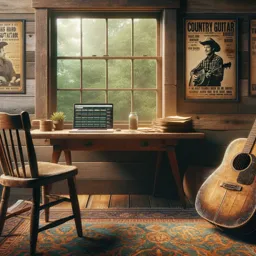Introduction to Electric Guitar Riffs
Learning the electric guitar is an exciting journey, and nothing feels quite as rewarding as mastering your very first riffs. A “riff” is a catchy sequence of notes or chords that forms the backbone of many iconic songs. In this guide, we’ll walk you through the basics of electric guitar riffs, essential techniques, and practical tips to get you started.
Understanding the Guitar Fretboard
Before diving into playing riffs, it’s crucial to get familiar with the guitar fretboard. The electric guitar typically has six strings, each tuned to a different note. Each fret represents a half-step in pitch, and understanding this layout will help you navigate riffs more efficiently.
Essential Techniques for Playing Riffs
- Alternate Picking: This technique involves alternating between down and up strokes with your pick, allowing you to play riffs quickly and smoothly.
- Pull-offs and Hammer-ons: These finger movements help you connect notes in a riff fluidly without always picking each note.
- Palm Muting: Gently resting your palm on the strings, near the bridge, gives riffs a punchy, percussive sound.
Practicing Your First Riff
Start with something simple, like the iconic “Smoke on the Water” riff on the low strings. Practice slowly, focusing on clean, even notes. Gradually increase your speed as you gain confidence.
Tips for Effective Practice
- Use a Metronome: Practicing with a metronome helps you keep time and develop a steady rhythm.
- Start Slow: Master each riff at a slow pace before trying to play faster.
- Record Yourself: Listening back helps you identify areas for improvement.
Next Steps
Once you’ve mastered your first riff, try learning riffs from different genres. This introduces you to new rhythms, melodies, and playing styles.
Keep practicing regularly, and don’t be afraid to experiment with your own riff creations. The electric guitar is all about personal expression—have fun discovering your unique sound!


























